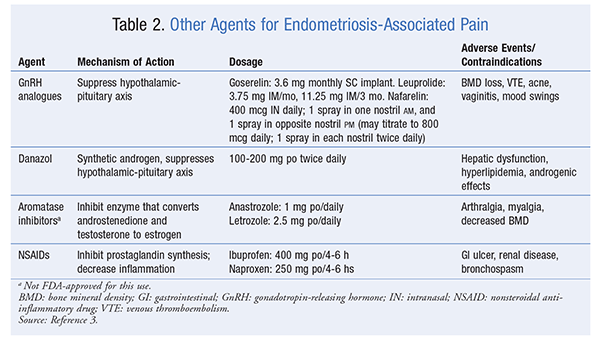In line with its mission, the Editorial Board of MedTvoiLokony makes every effort to provide reliable medical content supported by the latest scientific knowledge. The additional flag “Checked Content” indicates that the article has been reviewed by or written directly by a physician. This two-step verification: a medical journalist and a doctor allows us to provide the highest quality content in line with current medical knowledge.
Our commitment in this area has been appreciated, among others, by by the Association of Journalists for Health, which awarded the Editorial Board of MedTvoiLokony with the honorary title of the Great Educator.
The goal of drug therapy is to eliminate or alleviate pain. Hormonal therapy and therapy with non-steroidal anti-inflammatory drugs (NSAIDs) are the most common. The type of treatment should be selected individually, taking into account the severity of the patient’s complaints, her reproductive plans or possible comorbidities. Hormone therapy is the abolition of ovulation and the development of secondary amenorrhea.
Oral contraceptive pills
• two-component – containing progestogen and estrogen
• single-component – containing progestogen
Contraceptive pills are taken continuously, i.e. without breaks for monthly or cyclical bleeding – with a break for bleeding, e.g. after 3 cycles. Reducing or stopping menstruation may be beneficial, especially with regard to the theory of retrograde bleeding and its role in the development of endometriosis. This method is often used also due to the lack of time limits in the use of drugs. The relatively low cost of the treatment is also a big advantage. Nevertheless, side effects such as decreased libido, migraines, and mood swings may appear.
Progestogens, or derivatives of progesterone, stop ovulation and cause the endometrium to atrophy. They are administered by injection, orally or as an intrauterine device. The patients consider cyclic spotting from the genital tract to be the most onerous side effect of progestogen therapy.
Gonadoliberin analogues (GnRH agonists) are used to produce an artificial menopause effect. Taking them, however, is associated with many side effects characteristic of menopause. Medicines from this group are taken by subcutaneous injections, in the form of a nasal spray or injections with prolonged action. GnRH analogues have an adverse effect on bone mass, so they are not used for more than 3-6 months. Longer intake may be associated with the development of osteoporosis. To prevent it, simultaneous HRT (estrogen-progesterone replacement therapy) or at least calcium supplementation is recommended.
The synthetic androgen is the oldest-generation active substance used in the treatment of endometriosis. It is taken orally, and the therapeutic dose is determined individually. Synthetic androgen causes numerous side effects, such as strong androgenic and hypoestrogenic effects, which are reported by almost 80% of patients. Some effects include lowering the voice, for example.
In the future:
- Aromatase inhibitors – their usefulness in the treatment of endometriosis has been confirmed in a few studies, but their treatment is associated with a high risk of bone loss. There is no reason to introduce them to widespread use, but after careful research, they are a promising treatment option for endometriosis.
- Statins – the existing premises give hope for the use of statins in the treatment of endometriosis.
NON-STEROID ANTI-INFLAMMATORY DRUGS (NSAIDs)
It is a broad, heterogeneous group of anti-inflammatory, analgesic and antipyretic drugs most commonly used to relieve pain caused by endometriosis, although there is no evidence that they are actually effective in this matter. Individual drugs vary in potency and toxicity. They are sometimes combined with other pharmaceuticals. In the case of endometriosis, it is recommended to take NSAIDs before the onset of menstruation. With long-term use, it is necessary to take protective preparations to prevent gastric ulceration. Unfortunately, none of the drugs used in the treatment of endometriosis offer a chance to completely cure the disease. It also happens that the patient’s body does not respond to any of the available pharmacotherapy methods.










